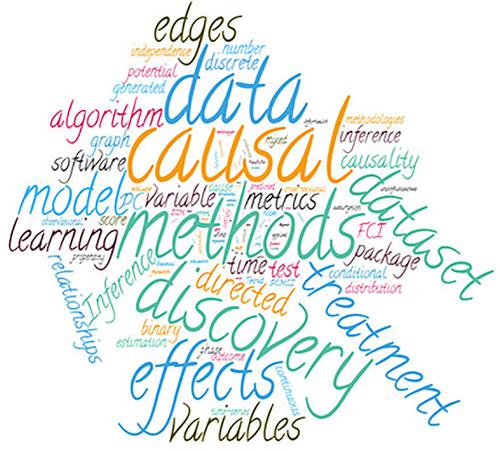当前位置:
X-MOL 学术
›
WIREs Data Mining Knowl. Discov.
›
论文详情
Our official English website, www.x-mol.net, welcomes your feedback! (Note: you will need to create a separate account there.)
Methods and tools for causal discovery and causal inference
WIREs Data Mining and Knowledge Discovery ( IF 7.8 ) Pub Date : 2022-01-19 , DOI: 10.1002/widm.1449 Ana Rita Nogueira 1, 2 , Andrea Pugnana 3 , Salvatore Ruggieri 4 , Dino Pedreschi 4 , João Gama 1
WIREs Data Mining and Knowledge Discovery ( IF 7.8 ) Pub Date : 2022-01-19 , DOI: 10.1002/widm.1449 Ana Rita Nogueira 1, 2 , Andrea Pugnana 3 , Salvatore Ruggieri 4 , Dino Pedreschi 4 , João Gama 1
Affiliation

|
Causality is a complex concept, which roots its developments across several fields, such as statistics, economics, epidemiology, computer science, and philosophy. In recent years, the study of causal relationships has become a crucial part of the Artificial Intelligence community, as causality can be a key tool for overcoming some limitations of correlation-based Machine Learning systems. Causality research can generally be divided into two main branches, that is, causal discovery and causal inference. The former focuses on obtaining causal knowledge directly from observational data. The latter aims to estimate the impact deriving from a change of a certain variable over an outcome of interest. This article aims at covering several methodologies that have been developed for both tasks. This survey does not only focus on theoretical aspects. But also provides a practical toolkit for interested researchers and practitioners, including software, datasets, and running examples.
中文翻译:

因果发现和因果推理的方法和工具
因果关系是一个复杂的概念,它的发展源于统计学、经济学、流行病学、计算机科学和哲学等多个领域。近年来,因果关系的研究已成为人工智能社区的重要组成部分,因为因果关系可以成为克服基于相关的机器学习系统的一些限制的关键工具。因果关系研究一般可以分为两个主要分支,即因果发现和因果推断。前者侧重于直接从观测数据中获取因果知识。后者旨在估计某个变量的变化对感兴趣的结果的影响。本文旨在涵盖为这两项任务开发的几种方法。本次调查不仅仅关注理论方面。
更新日期:2022-01-19
中文翻译:

因果发现和因果推理的方法和工具
因果关系是一个复杂的概念,它的发展源于统计学、经济学、流行病学、计算机科学和哲学等多个领域。近年来,因果关系的研究已成为人工智能社区的重要组成部分,因为因果关系可以成为克服基于相关的机器学习系统的一些限制的关键工具。因果关系研究一般可以分为两个主要分支,即因果发现和因果推断。前者侧重于直接从观测数据中获取因果知识。后者旨在估计某个变量的变化对感兴趣的结果的影响。本文旨在涵盖为这两项任务开发的几种方法。本次调查不仅仅关注理论方面。
































 京公网安备 11010802027423号
京公网安备 11010802027423号